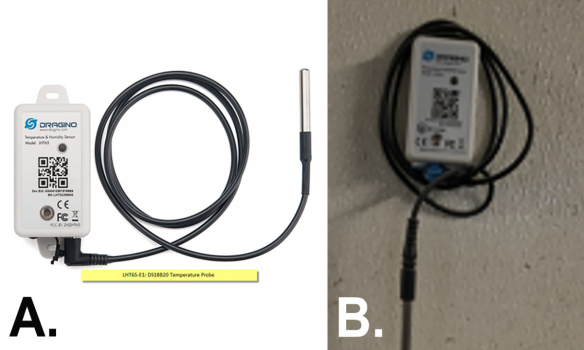An appropriate thermal environment — temperature and humidity — is critical for animal growth and health.
During very hot days, animals may suffer from heat stress, causing the loss of appetite, poor growth performance and increased mortality and morbidity, whereas cold temperatures may result in increased feed intake, a reduced growth rate and a decreased feed-to-meat conversion efficiency.
In confinement barns, the thermal environment is regulated primarily by ventilation. However, undesired thermal environmental conditions could still happen, requiring timely human intervention. A similar challenge is faced by outdoor animal production systems as well.
Here, we present a low-cost solution to remote monitoring of the animals’ thermal environments using LoRaWAN Internet-of-Things (IoT) technology. It allows producers to access the real-time thermal environmental information on their cell phones, tablets or computers, and respond accordingly.
It is noteworthy that the solution is for farms whose ventilation controllers can’t do remote monitoring. Modern smart controllers — e.g., Maximus brands — can do both remote monitoring and control, but they are expensive.
Continue reading: https://www.capjournal.com/community/low-cost-remote-monitoring-solution-for-thermal-environments/article_846f15ec-0f21-11ec-9916-db4682277ce9.html
During very hot days, animals may suffer from heat stress, causing the loss of appetite, poor growth performance and increased mortality and morbidity, whereas cold temperatures may result in increased feed intake, a reduced growth rate and a decreased feed-to-meat conversion efficiency.
In confinement barns, the thermal environment is regulated primarily by ventilation. However, undesired thermal environmental conditions could still happen, requiring timely human intervention. A similar challenge is faced by outdoor animal production systems as well.
Here, we present a low-cost solution to remote monitoring of the animals’ thermal environments using LoRaWAN Internet-of-Things (IoT) technology. It allows producers to access the real-time thermal environmental information on their cell phones, tablets or computers, and respond accordingly.
It is noteworthy that the solution is for farms whose ventilation controllers can’t do remote monitoring. Modern smart controllers — e.g., Maximus brands — can do both remote monitoring and control, but they are expensive.
Continue reading: https://www.capjournal.com/community/low-cost-remote-monitoring-solution-for-thermal-environments/article_846f15ec-0f21-11ec-9916-db4682277ce9.html

